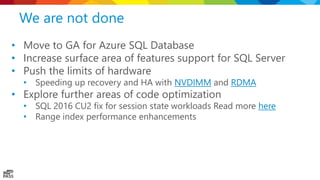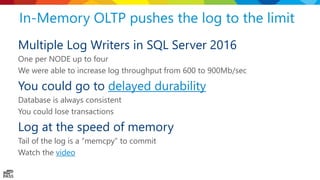The document is a comprehensive presentation on SQL Server's in-memory OLTP (Online Transaction Processing) architecture, focusing on its capabilities and performance enhancements since its introduction in SQL Server 2014. It details components like data and index management, concurrency, logging, checkpointing, and natively compiled procedures, while providing insights through case studies and architecture demonstrations. The presentation emphasizes the system's efficiency in handling high-speed transactions with minimal latency and the innovative memory management techniques employed in the in-memory OLTP framework.
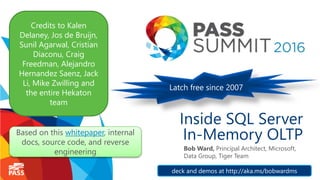
















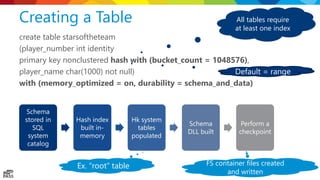
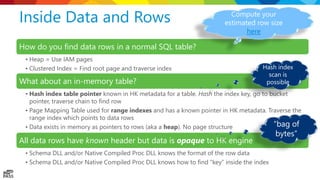





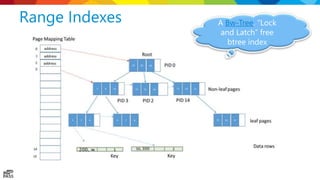

![The Row Payload create table letsgomavs
(col1 int not null identity primary key
nonclustered hash with (bucket_count =
1000000),
col2 int not null,
col3 varchar(100)
)
with (memory_optimized = on, durability
= schema_and_data)
struct NullBitsStruct_2147483654
{
unsigned char hkc_isnull_3:1;
};
struct hkt_2147483654
{
long hkc_1;
long hkc_2;
struct NullBitsStruct_2147483654 null_bits;
unsigned short hkvdo[2];
};
Header hkc_1 hkc_2
Null
bits
Offset
array
col3
“your data”
nullable](https://image.slidesharecdn.com/insidesqlserverin-memoryoltp-170219223623/85/Inside-SQL-Server-In-Memory-OLTP-27-320.jpg)




























